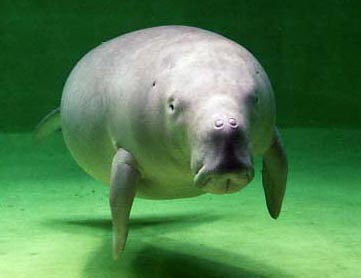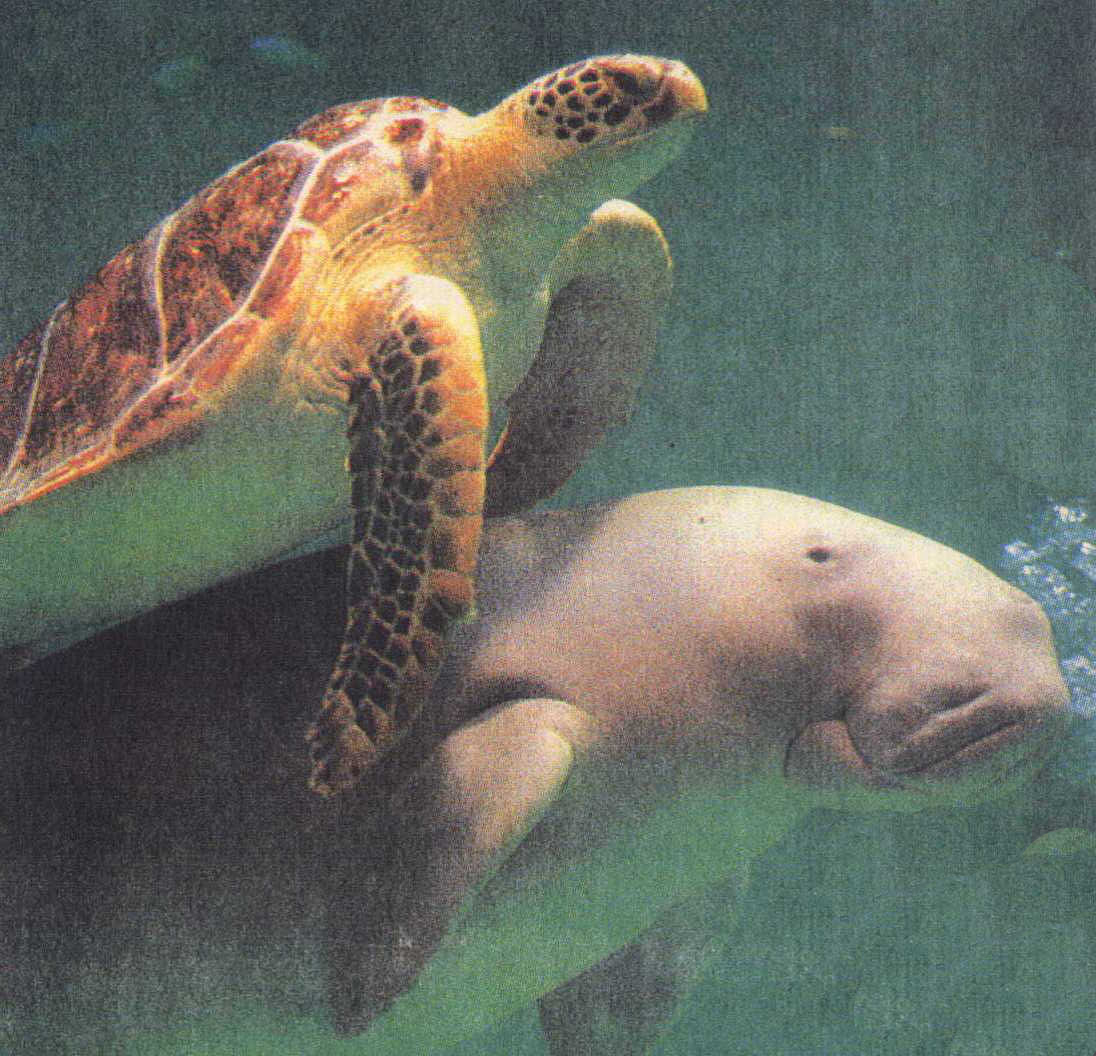The Dugongs
Mermaids? Oh, yes. Dugongs had been believed as Mermaids or Sirens. That's why they are in the order Sirenia. But, if you look at them, they are far from our images of Mermaids. Dugongs look more like "sea-cow" as they commonly called. Also, the name "dugong" is said to be derived from the word meaning "sea-pig" in Malayan-Javanese. Antiquities must have had extraordinary imagination or in the extreme condition when they described dugongs as Mermaids. Even Christopher Columbus first saw dugongs near the Hispaniola Island after his long voyage, he said that they were far less beautiful than he had imagined.

Dugongs do not look like the beautiful mermaids as in legends, but they have lovely little eyes and charming protrude upper lip. Dugongs are inhabited in the tropic coastal waters which temperatures above 18°C. They found in shallow coastal water of Indian Ocean to West Pacific and its northeastern limit is around the Ryukyu Islands, Japan. Marine biologists estimate that only 100,000 dugongs remain worldwide and about 50 of them are inhabited in the coastal water of Ryukyu Islands. Dugongs are included in the IUCN Red List rated vulnerable.
Adult dugongs are weighing more than 400kg and up to three meters in length. They live around 50 to 70 years and take 10 years to reach maturity. A female dugong takes a year to give birth to a single calf by three or five years cycle. They are relatively slow to reproduce. Dugongs are feed on only the sea grasses. They eat grasses amount of 8 to 10% of their weight a day. The shallow sea around the Ryukyu Islands is abundant with their favorite seaweed. The size of the seaweed bed is about 1,329 hectare and feeding trenches of dugongs have been found in the sea of Ryukyu Islands.
Dugongs have been inhabited in the sea of Ryukyu Islands for a long time. They had been haunted for its meat in the past. Now another threat is jeopardizing their lives. Dugongs have been victims of gill net fishing or defense net for sharks and found dead on the shore. Also, outflow of tuff loam would damage their favorite seaweed bed. Seaweed bed is not only for dugongs but also plays substantial roles in the marine ecosystem. Seaweed bed subdues drift of the tide, and stabilizes the sediments that make sea water clean and clear. Furthermore, lots of other seaweeds, small fishes, and other marine life are closely bond up with seaweed beds. The most recent threat is the new civilian-military airport plan in Nago. The plan would destroy seaweed bed and the ecosystem of the shallow water of the Ryukyu Islands.

Despite the current situation, little is known about this harmless sea mammal. Further research is needed to determine its role in the marine ecosystem. Toba aquarium is known to the only zoo keeping dugongs. Also, in some areas, aerial surveys and satellite telemetry are used study this animal. The problem is not the only for dugongs, but the whole ecosystem of the earth. We don't want to let mermaids live only in the legends, do we?
